
I am naïve. As I put quill to paper (yes I actually still hand-write first drafts) I recall many exchanges I have had with former students starting their professional careers about the art market, and how to be a successful artist (art star). Now don’t judge — that is a perfectly valid aspiration, especially for a generation weaned on reality TV stardom . . . America’s Top This . . . or America’s Next That.
I admitted to them that I did not have the magic spell for such a thing, or I would have used it on myself long ago. I could only offer, “Do good and honest works; try to get them seen; and most importantly – just be kind to others,” but this was simply not enough for them. They were convinced that steps could be taken that, if followed properly, would lead them to become America’s Next Art Star.
This line of thinking begs a question: if steps can be taken to manipulate the market for success, then someone has taken those steps, and the market is already rigged. And if the market is rigged, why do we play?
“Prince, of course the art market is rigged. Where have you been? The same few people get all the grants, all the shows, and all the sales. Wake up. It’s just how things are done. It’s all about ‘who you know and whose arse you kiss’. You have just got to play the game.”
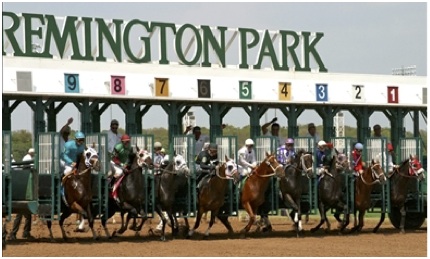
When I was an undergraduate at UT Arlington, I loved the horse races. Thursdays, I would cut class and drive to Remington Park in Oklahoma City to play the ponies. I would lose $75 every time and drive back home. It didn’t matter that I was broke and the odds were stacked against me, I just wanted the Big Score. Hey, I was young and in college. And, as I said, I am naïve.
Did you hear how big brokerage houses, whose computers execute stock trades a few nano-seconds ahead of the rest of the market make millions of “risk-free” dollars? I remember a financial advisor on CNBC saying, “A few people are actually playing the game. The rest of us simply think we are playing.”
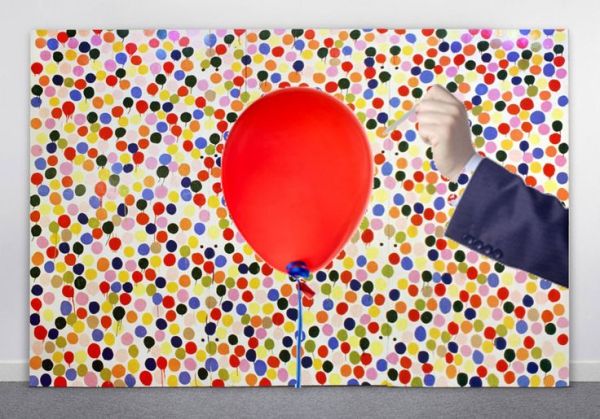
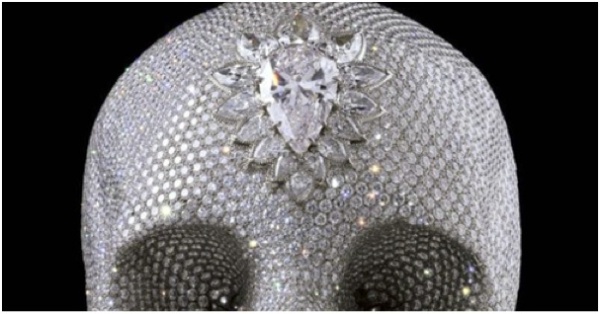
Here are some more conspiracy theories I’ve heard:
Ever heard of Art Hedge Funds? Wealthy investors pool their money to purchase art in the hopes that their investment will show a profit a few years down the road. The investors can remain anonymous because it is the Fund that is making the purchase.
“Prince, is there really such a thing?”
Is it possible to imagine that some of these investors sit on the acquisition committees of museums, where they might advocate for artists that are in their own collections to boost their value? (If you are a really clever artist, you can maneuver yourself into being part of a group that buys your own work. Hmm. The sale of some blinged-out skull comes to mind.) Do people rig the market in such a way?
“No, such a thing would never happen. That is just unethical and crazy talk. You just hush up, Prince.”
‘Cause ethics and commerce always go hand in hand, right? Right. Yeah, that could never happen. Nevermind.
Or how about this one, “it’s always the same people, ‘the usual suspects’, that get in the big shows at the Whitney, or PS1, or the Walker, or even the CAMH”.
Hmm. It may feel like that, but it’s because our brains tend to remember certain names while excluding others that fit a preconceived notion that we have. It’s actually a psychological phenomenon called memory bias. But is there any truth to such a claim? Well sure. The really big names can be found at all the major international exhibitions because: 1) they have a name that would draw a large audience and 2) they have been vetted; one can be relatively certain of what to expect from them.
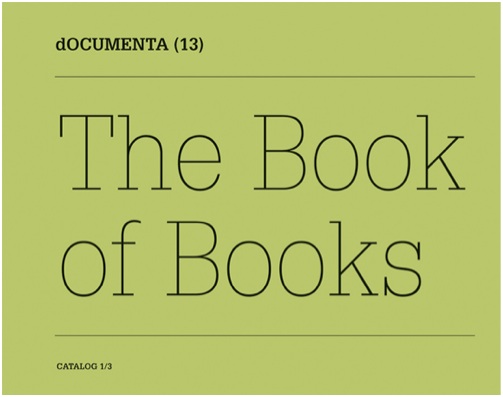
There is also a dirty practice within the exhibition circuit that I will call “lazy curation.” Many curators love their jobs and are underpaid and overworked and bring interesting exhibitions to their communities. But for some, it’s easier to look through a Biennial Catalog and re-curate an exhibition from those artists, or to put together an exhibition of friends. When money is tight, isn’t a lazily curated show better then going dark for a few months? Could this ever happen in the real world?
“Of course not Prince. No. Curators are not human; they are machines that have an endless supply of time, energy, and money. They can search catalogs and re-curate more interesting shows than the originals and they are able to make decisions on works of art independent of their personal relationships with the artists.”
Shoot, you are right again. Nevermind. (Damn, I think I need some “Lithium”).
How about this popular one: “It’s all in who you know. You have to go out and schmooze the right people to get any where in the art world.”
Well no sh*t, Sherlock. How is anyone supposed to find you locked away in your cave making the next great “Relational Aesthetic DIY Multi-Media Interactive Installation Event Happening Thingy”? Very true. An artist is part of a community, and to be a part of a community, you must come out from the cave. (Says the notorious hermit crab.)
“But once I am out, I don’t know anyone and nobody pays attention to me. And the people that I do know, nobody pays attention to them either.”
Well that’s bloody perfect you silly cat, go and make a show yourself! Most underground shows are usually Bold, Brave, and Exquisitely Bad (in a good way)…

You, who are the abandoned – band together on this St. Artist’s Day and do something underground that you are very proud of, that you believe in, until somebody is forced to notice you. The last part of this sentence is what I want you to pay attention to… If you have ever been part of such a conversation about alternative ways of exhibiting that ends with ‘until somebody notices you’, you are admitting that there is another system that is hierarchically more desirous to be engaged in… and if this hierarchy exists then it is valid to discuss issues related to entry into said system.
Do curators actually select artists based on whom they know? Well of course they do. That does not mean that they exclusively select artists that they only know personally. But when given a set amount of slots for an exhibition and limited time and money to search for artists, they will generally gravitate towards artists that they know. I have personally heard curators of biennials say, “I chose artists that I was already familiar with and have followed for years.” To their credit, the ones I know about have admitted the inherent unfairness to their methods publically. Now are there times when there may be a conflict of interest between artists and curators of being too friendly with one another? Sure, they aren’t machines after all. Oh wait, didn’t we establish earlier that they were?
Growing up in Dallas in the 70’s, I was and remain a Cowboys fan (Well them and the Von Erichs… You Dallas cats know who I’m talking about.) And the biggest criticism of the NFL nowadays is that it is a “Copy-Cat League”.
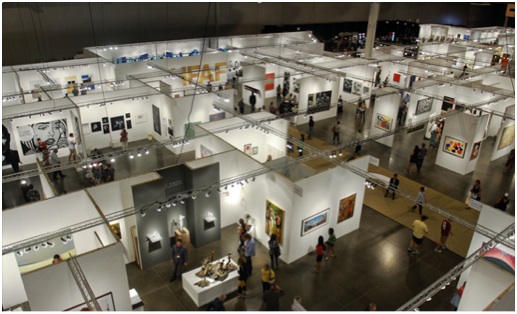
Houston Fine Arts Fair, 2013
“Well darn Prince, then it kinda is all about who you know isn’t it? Wait —maybe it’s not that way in the gallery circuit? Galleries are in it for commerce, so they would be more open to showing unknown artists, right?”
Well, yes and no. Gallerists, like curators, are understaffed and underfunded. And unlike a museum, a gallery’s primary concern is keeping its doors open with sales. Over the years, there has been a shift: curators and gallerists who were once willing to receive cold-calls or blind visits now only accept referral visits. An informal vetting, if you will. Few curators and fewer galleries view artists’ work cold any more. The preferred method is via a referral from a trusted colleague. It is a perfectly valid vetting system, and saves valuable time, but there are two dangers: 1) a large portion of producers that are outside the frame will be ignored; and 2) there is a danger of creating too much “same-ness.” What do I mean by too much “same-ness”? If the only dialogue that you have is with people that look like you, think like you, and agree with you… well that type of incestuous relationship eventually breeds scary zombie cats that all look alike and want to eat your brains. Have you ever visited a major metropolitan city, like Gotham, and left going, “Wow, lots of boring work that all looked the same; like zombie cats were eating my brain?”
“Prince, no, that never happens. Gotham always provides fresh and new ideas!”
Okay. Nevermind. (“And the animals I’ve trapped, have all become my [zombie] pets.”)

“Well my problem is I got an MFA, but from the wrong school. If your degree doesn’t say Yale or NYU, nobody will pay attention to you. If you get the right degree, from the right school, and then go to the right residency programs, your ticket is written.”
Very true: an artist’s pedigree is another form of vetting. I have been fortunate enough to teach at very wealthy private universities, tier-1 research universities, and small under-funded state universities, and I can honestly say that the quality of education you get at Yale is comparable to the education you get at Lamar University in Beaumont.
Think about it, 1+1, is still going to be 2 whether taught at Yale or Lamar. The method to compose a sound photograph, the technique to draw a straight line, and the ability to mix pigments all will be similar no matter where you have gone to school. But what are different are the opportunities that are afforded one graduate vs. the other. Privilege does beget privilege. The act of going to university in itself is a privilege. But I am guessing that being a student of Bob Storr’s begets greater privilege (access directly or indirectly to the art market).
“Prince, I got my degree but I can’t afford to go to a residency like Skowhegan, Glassell, or the Whitney ISP.”
Sorry, Privilege begets privilege. Opportunities are afforded through these types of situations and unfortunately, if you can’t pay, you can’t play. Which leads to an ugly truth that no one wants to face.

The market simply can’t sustain all the artists nor all the art graduates (MFA & BFA) that universities put out into the world. It’s just impossible. There are not enough exhibition spaces, private collectors, grants, and public collections to sustain all the qualified artists in Texas, much less the world. Therefore, it is in the current art market’s self-interest to maintain the status quo and wish that the majority of artists will not succeed. (What would happen to De Beers’ business model, if their treasure vaults were opened and the market was flooded with the diamonds that they are socking away?)
Whether you agree that the system is corrupt or not, the markets’ inability to sustain all the qualified artists is fact. Would you have gotten that $30-100k Art Degree, if you knew the system was betting against your actual success? Hopefully your answer, like mine, would be yes. But remember, I like going to the track.
A friend sent me this really great quote from a New York Times article on the author George Saunders that defends the MFA degree. In an interview several years ago with Ben Marcus for The Believer, Saunders defended the time spent in an M.F.A. program by saying, “The chances of a person breaking through their own habits and sloth and limited mind to actually write something that gets out there and matters to people are slim. But it’s a mistake”, he added, “to think of writing programs in terms that are too narrowly careerist . . . Even for those thousands of young people who don’t get something out there, the process is still a noble one—the process of trying to say something, of working through craft issues and the worldview issues and the ego issues—all of this is character-building, and, God forbid, everything we do should have concrete career results. I’ve seen time and time again the way that the process of trying to say something dignifies and improves a person.”

Back to another complaint:
“Curators don’t look at anyone over 40. If you haven’t made it by then, you might as well just give up.”
Well we were told never to trust anyone over thirty too, so that’s an improvement, right? Yes there is unquestionably age-ism at work within the market. There is a greater potential profit (financial or recognition for discovering) margin when working with young artists. And everybody likes to play with shiny new toys. And like, with most shiny toys, it’s eventually thrown into a pile in the corner while we wait for mom to buy us another. The problem occurs if we forget that there are a pile of perfectly good toys that no one has ever played with; and we are unwilling to search through that pile to find the one leather mitt that just fits perfect. The art market does not generally reward the experience of time and the commitment to consistently produce in the studio with little or no recognition. That is why scores of great artists pass unnoticed. But let’s not limit this to age-ism, don’t forget: Classism, Sexism, Genderism, & Racism to name a few.
“Prince, you got it wrong. The art market is the most open in all of society. We allow for all differences now. Those were issues maybe 25 years ago but not now. The market is not that restrictive anymore.”
Damn it, you’re right… being aware of a problem does solve said problem. Nevermind. (Damn you; go back to the grave Kurt!)
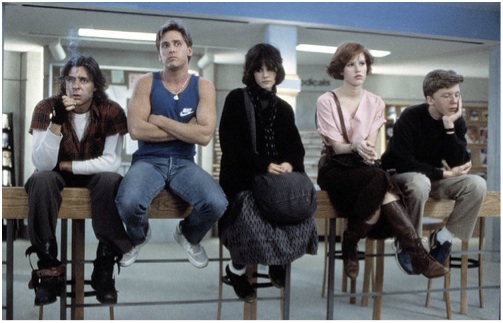
The Breakfast Club, 1985
Ever noticed any “clique-ish-ness” as you were walking around at various openings? Do art communities devolve into various cliques similar to what happened in school? It’s like all the nerds that got bullied in High School have now formed their own cliques. And now the hipsters pick on each other depending on where you sit on the pecking order. People watching at openings can be very entertaining when you try and imagine you are back in high school and attempt to place various people in their respective cliques. Are you a Mod or a Rocker? (Me, I wanted to be a Mod, but I own a motorcycle.) Must you be part of a clique to survive locally as an artist?
“Well no-doi, Prince. (You did NOT just bring back the ‘doi’.) A clique is just another word for community.”
It certainly is, but it has a pejorative and exclusionary component to it. It certainly doesn’t hurt to be in a “popular” clique when people are organizing shows. They will always look within that group before going out. The popular kids also get the most opportunities thrown their way. So how do you get with in-crowd?
“If you have to ask Prince, then…”
Would you be able to name the names of those that are on the inside looking out in your community? Would you be able to distinguish the various cliques in your art communities? If so, is the game rigged on a local level?
“Prince, now you have gone too far. God no, our community is just that, a group of equals that are bound together by our love for art. Cliques may be true in other cities, but not mine.”
Gotcha, you’re right. It’s nothing like something I remember about Animals and Farms. Nevermind. (“Come, as you are, as you were…”)
So what do you think? Is there a modicum of truth in any of these statements that all of us have heard at various times with other artists? Is there an inherent corruptness within the system, where the playing field is never level? Are Artists fooling themselves into believing that they are working in a Meritocracy?
“But Prince, this is just a boring rehashing of all the complaints we have heard before. Of course an artist’s success is a combination of hard work and who you know.”
I agree.
And if you agree with that, then you must agree that on some level the system is corrupt and that we operate simply on faith that the system will work out for each of us. Otherwise why are we playing? Since we went off the gold standard, it is simply blind faith that makes a piece of paper with George Washington’s face on it worth any value. It’s simply a ‘work on paper’, whose only real worth is based on our belief in the financial system. But what happens if we lose that faith? What happens to the system when you question its foundations? What will a porcelain statue of Michael Jackson and a Diamond Studded Skull say about us 250 years from now with the anti-septic of time?
“Prince, that doesn’t matter, we live in the moment… of wanting instant and constant fame. Look, we didn’t fix the climate, so f*ck fixing Art.”
Right again. The future be damned. Nevermind. (Might as well put the shotgun to my head.)
So for all those that complain about the art world, you have some choices: 1) Accept the reality of things as they are and keep playing; 2) Collect your chips and in the words of Eric Cartman say, “Screw you guys, I’m going home,” or 3) Change the game.
Or maybe I am just a conspiracy junkie and my many years of watching the X-Files while listening to Nirvana is catching up with me. “The truth is out there?”
(For the sake of argument, I realize that I am making broad overgeneralizations… But this is a Blog post and not a Dissertation, gosh darn it! Although, its length might be… smile. Thank you for reading.)



4 comments
Brilliant!
This is fabulous. Beware, if you did not know about the Most Reverend Art World, this can happen tp you: Art Paradise’s Lost or loosing one’s innocence
Loved the photos, too. Yep. And.. yep. See ya at the Frick, suckers!
This article is particularly relevant with the Ed Wilson GRB commission situation.